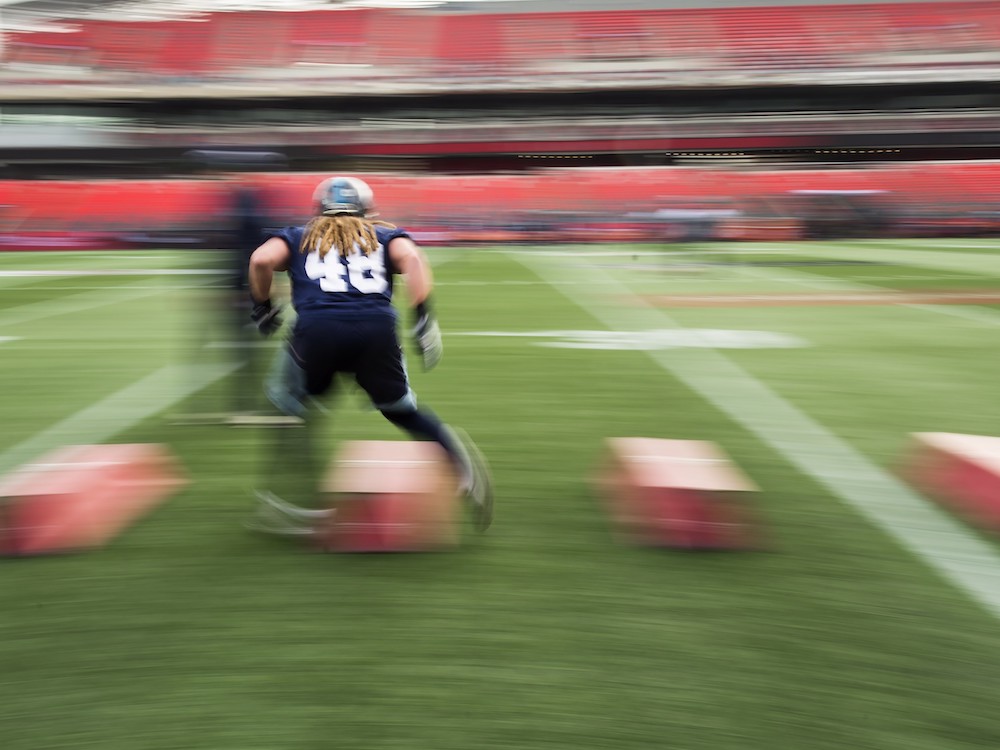CFL commissioner follows the science on concussions, but his caution differs from the scientists’

OTTAWA — Randy Ambrosie could only punt on the concussion questions for so long.
When he was installed as CFL commissioner in July, the former lineman said that he was no doctor and no scientist, so he didn’t want to wade into the debate about the risks associated with football and brain disease.
But he’s been in the job for five months now, and he’s talked to some of those doctors and scientists, and so now Ambrosie is willing to offer some thoughts on the matter. It turns out the new guy, on this particular issue, is a lot like the old guy.
Speaking at the commissioner’s Grey Cup week news conference on Friday morning, Ambrosie said he wanted to take a minute to address the “elephant in the room.” He said the CFL understands that concussions are traumatic brain injuries, and that serious harm can develop if they are not properly treated.
But on the questions of whether such repeated brain trauma leads to conditions like dementia and chronic traumatic encephalopathy (CTE), Ambrosie made a point of saying “the cause and effect is unclear.” He said “we are going to rely on the science” and added that “the science is not conclusive.”
“All that tells us is that we have to keep working,” Ambrosie said. “There is so much more that we don’t know than we know.”
For all of his attempts to couch this issue in cautious language, and for all Ambrosie did to emphasize that he takes the subject of football and brain health seriously, there is a simple takeaway from all that talk: CFL commissioner denies link between football and CTE, the headlines will say.
And that will be a fair assessment of the situation. And Ambrosie will still be technically correct.
Even though NFL officials conceded under Senate questioning last year that a link between football and brain disease exists, and many high-profile advocates for former players insist that the link is undeniable given the repeated studies that show evidence of CTE in an overwhelming number of brains donated by former football players, Ambrosie can fall back on saying the science is inconclusive.
He referenced the Berlin consensus, which was a paper developed by a group of world-leading scientists who meet annually to exchange research and generally update each other on developments related to concussion and sport. It says the following: “a cause-and-effect relationship has not yet been demonstrated between CTE and (sport-related concussions) or exposure to contact sports.” Also: “the notion that repeated concussion or subconcussive impacts cause CTE remains unknown.”
The reader will note that there is nothing equivocal about those statements. Ambrosie, in refusing to confirm that the link exists, is only echoing what the scientists themselves are currently saying, even if their motivations for saying so are entirely different. The doctors are being scientifically cautious, noting the limitations on the current research come from the fact that CTE can only be detected post-mortem right now. We don’t have a control group, we don’t have blinded trials, we don’t have many of the elements that scientists want before they make strong cause-and-effect associations.
Ambrosie, meanwhile, is being cautious because the future of the league is at stake. The NFL settled its lawsuits with former players; the prospect of a class-action from former CFL players looms over the league’s much more modest finances. As long as the science remains a little fuzzy, the CFL can give its lawyers something to work with.
But there is a big difference between something being legally and scientifically established and something being sensibly known. We are long past the point where anyone should honestly question whether football players are at elevated risk of developing brain disease. Of course they are. How much of a risk? Not sure. Might there be other contributing factors that would put some, but not all, football players at serious risk? Quite possibly.
But talk to any of those neurologists who take part in things like the Berlin conference, and they will say that while there are many unknowns with CTE, there is near certainty that crashing one’s head into a opponent at high speed has a negative impact on the health of the brain. Football is far from being the only sport or activity that elevates the risk of brain trauma, but that doesn’t mean the risk is not there.
Ambrosie, now that he is speaking about the issue, does not speak of it casually. When it was suggested on Friday that his framing of concussion science seemed to be taking a very football-positive view, he responded that “I promise you were are looking at both sides of the data.” And he vows that he will continue to let the science lead him.
Following the path set by science is a good plan for a new commissioner. He just might not like where it leads him.
That elephant in the room? It’s still there.
sstinson@postmedia.com





